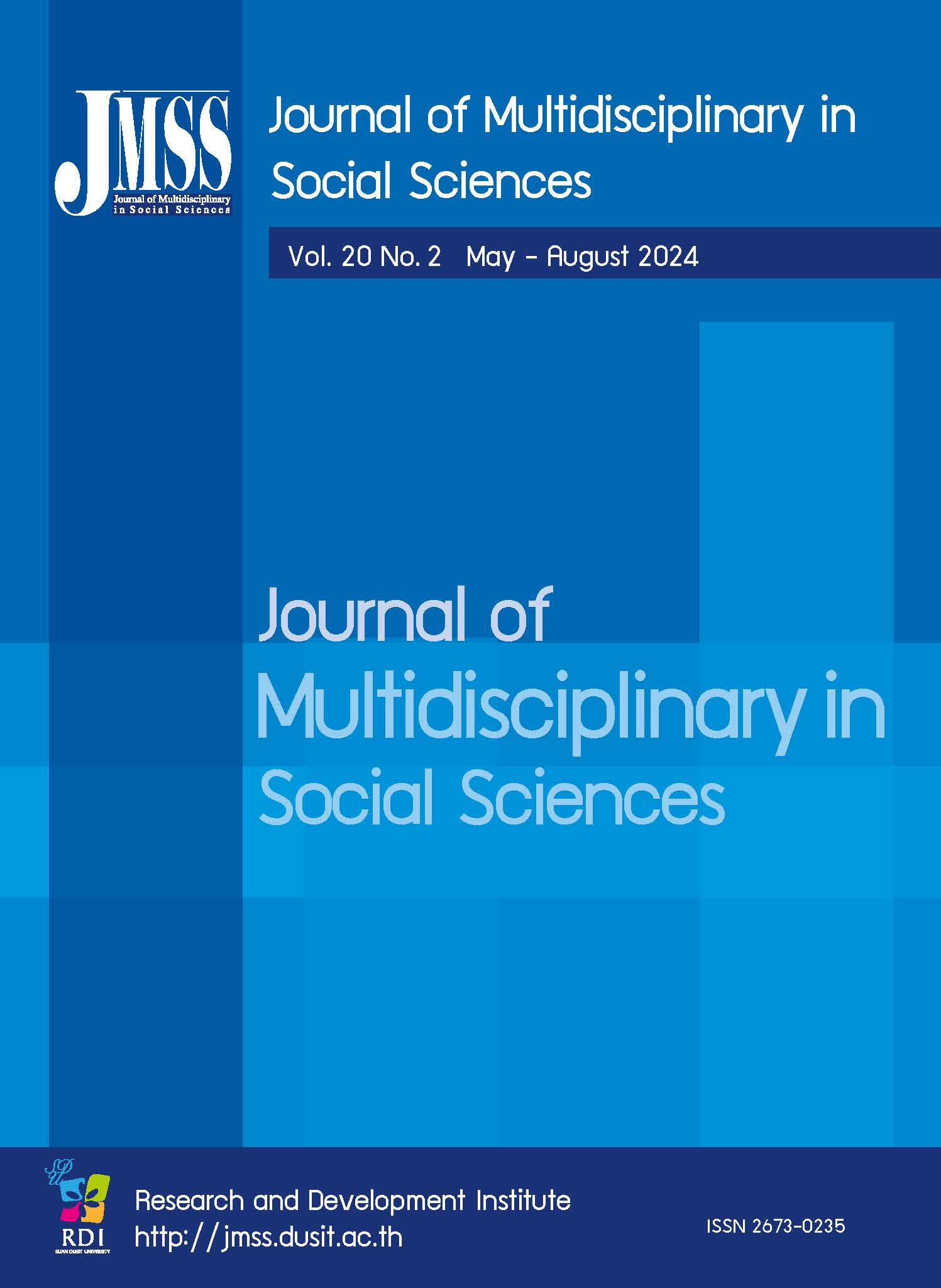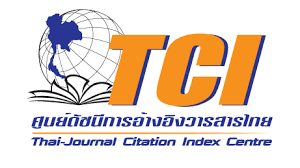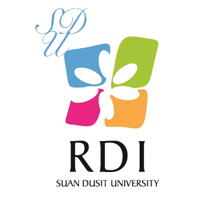Enhancing Cross-Border M&A Integration in Thailand: Learning Interventions and Strategies
Keywords:
Mergers and acquisitions, Learning intervention, Organizational culture, SubculturesAbstract
Cross-border mergers and acquisitions (M&As) in Thailand have increased, as induced by increasing development in the Eastern Economic Corridor (EEC) to accelerate economic growth under the Thailand 4.0 policy. The authors explored the need for skill development for employees who work in an organization that has been impacted by several acquisitions with seemingly incompatible organizational cultures. Specifically, the authors explored in-depth relationships among subcultures (i.e., departments) and designed learning interventions for M&As that had rarely been used in previous integration processes. This study employs the mixed-method approach in research design to collect data from 63 Thai employees from five strata within a multinational organization located in Thailand. The first step used the qualitative method to explore employee development needs for coping with M&As by conducting interviews with 21 employees. The second step consisted of designing learning interventions. The third step used the quantitative method by testing the training program and using a one-group pretest-posttest design with 42 managers. Key findings were the need for handling subcultural interactions in M&As to mitigate the negative impact on the people dimension in an organization. The implications for theory and HRD practices are discussed.
References
Alvesson, M., & Sveningsson, S. (2016). Changing organizational culture: Cultural change work in progress. London: Routledge.
Anderson, V. (2017). Criteria for evaluating qualitative research. Human Resource Development Quarterly, 28(2), 1- 9.
Arghode, V., Brieger, E. W., & McLean, G. N. (2017). Adult learning theories: Implications for online instruction. European Journal of Training and Development, 41(7), 593-609.
Bridges, W., & Bridges, S. (2019). Transitions: Making sense of life's changes (40th Anniverary ed.). Boston: Da Capo Lifelong Books.
Broughton, K. (2022). More companies pause deal-making amid market volatility, high inflation. Retrieved May 3, 2021, from https://www.wsj.com/articles/morecompanies-pause-deal-making-amid-market-volatilityhigh-inflation-11665394203
Brown, J., & Isaacs, D. (2005). The world café: Shaping our futures through conversations that matter. Oakland: Berrett- Koehler Publishers.
Caiazza, R., & Volpe, T. (2015). M&A process: A literature review and research agenda. Business Process Management Journal, 21(1), 205-220.
Creswell, J. W., & Clark, V. L. P. (2018). Designing and conducting mixed methods research (3 ed.). NYC: SAGE Publications.
Creswell, J. W., & Creswell, J. D. (2018). Research design: Qualitative, quantitative, and mixed methods approaches. NYC: SAGE Publications.
Deloitte. (2018). The state of the deal: M&A trends 2019. Retrieved June 10, 2021, from https://www 2.deloitte.com/content/dam/Deloitte/us/Documents/mergersacqisitions/
us-mergers-acquisitions-trends-2019-report.pdf
Dong, H. (2021). Adapting during the pandemic: A case study of using the rapid prototyping instructional system design model to create online instructional content. The Journal of Academic Librarianship, 47(3), 102356.
Dringoli, A. (2016). Merger and acquisition strategies: How to create value. Cheltenham: Edward Elgar Publishing.
Dyke, M. (2017). Paradoxes of a long life learning: An exploration of Peter Jarvis’s contribution to experiential learning theory. International Journal of Lifelong Education, 36(1-2), 23-34.
Edmondson, A. C. (2019). The fearless organization: Creating psychological safety in the workplace for learning, innovation, and growth. NYC: John Wiley & Sons.
Glesne, C. (2016). Becoming qualitative researchers: An introduction (5 ed.). London: Pearson Education.
Hall, B. J., Covarrubias, P. O., & Kirschbaum, K. A. (2018). Among cultures: The challenge of communication (3 ed.). London: Routledge.
Harris, T. E., & Nelson, M. D. (2019). Applied organizational communication: Theory and practice in a global environment (4 ed.). UK: Taylor & Francis.
Hatch, M. J., & Cunliffe, A. L. (2013). Organization theory: Modern, symbolic, and postmodern perspectives. UK: Oxford University Press.
Hogg, M. A., Abrams, D., & Brewer, M. B. (2017). Social identity: The role of self in group processes and intergroup relations. Group Processes & Intergroup Relations, 20(5), 570-581.
KPMG. (2022). M&A trends in Thailand: Q4 2022. Retrieved: June 20, 2021 from https://assets.kpmg.com/content/dam/kpmg/th/pdf/2023/01/m- and-a-trends-inthailand-
q4-2022.pdf
Kyprianou, C., Graebner, M. E., & Rindova, V. (2016). Strategic conversations: Methods for data collection and analysis. In K. D. Elsbach & R. M. Kramwer (Eds.), Handbook of qualitative organizational research: Innovative pathways and methods. London: Routledge.
Latta, G. F. (2020). A complexity analysis of organizational culture, leadership, and engagement: Integration, differentiation, and fragmentation. International Journal of Leadership in Education, 23(3), 274–299.
Lee, S. J., Kim, J., & Park, B. I. (2015). Culture clashes in cross-border mergers and acquisitions: A case study of Sweden's Volvo and South Korea's Samsung. International Business Review, 24(4), 580-593.
Mak, C. W., Phaopat, N., Kyaw, T., & Russ-Eft, D. F. (2017, March 2-4). A 7R framework: A tool to discover and resolve ethical issues in organizational change. The 2017 AHRD International Research Conference in the Americas, Texas, United States.
Mark, M. L., & Mirvis, P. H. (2016). Mergers and acquisitions: Still crazy after all these years. In W. J. Rothwell, J. M. Stavros, and R. L. Sullivan (Eds.), Practicing organization development: Leading transformation and change (4th ed.). NYC: John Wiley & Sons.
Merriam, S. B. (2017). Adult learning theory: Evolution and future directions. PAACE Journal of Lifelong Learning, 26, 21-37.
Morcov, S. (2020). Modern agile learning environment. The 14th International Technology, Education and Development Conference (INTED2020). Valencia, Spain.
Oreg, S., & Berson, Y. (2019). Leaders’ impact on organizational change: Bridging theoretical and methodological chasms. Academy of Management Annals, 13(1), 272-307.
Panibratov, A. (2017). Cultural and organizational integration in cross-border M&A deals: The comparative study of acquisitions made by EMNEs from China and Russia. Journal of Organizational Change Management, 30(7), 1109-1135.
Patton, M. Q. (2015). Qualitative research & evaluation methods: Integrating theory and practice (4th ed.). NYC: SAGE Publications.
Phaopat, N., & Mak, C. W. (2017). Human interaction of the organization and the organization of human interaction: A 7R view. The Theory and Applications in the Knowledge Economy Conference 2017, the meeting of Academy of Human Resource Development. Zagreb, Croatia.
Popairoj, J. (2019). Mergers and acquisitions and success factors in Thailand. ASEAN Journal of Management & Innovation, 6(2), 41-57.
Rahim, K. F., Ahmad, N., Ahmad, I., & Rahim, F. A. (2013). Determinants of cross border merger and acquisition in advanced emerging market acquiring firms. Procedia Economics and Finance, 7, 96-102.
Rosenberg, M. B. (2012). Living nonviolent communication: Practical tools to connect and communicate skillfully in every situation. Louisville: Sounds True.
Rothwell, W. J., B. Benscoter, M. King, and S. B. King. 2016. Mastering the Instructional Design Process: A Systematic Approach (5th ed.). NYC: John Wiley & Sons.
Saldaña, J. (2013). The coding manual for qualitative researchers (2nd ed.). NYC: SAGE Publications.
Sarala, R. M., Vaara, E., & Junni, P. (2019). Beyond merger syndrome and cultural differences: New avenues for research on the “human side” of global mergers and acquisitions (M&As). Journal of World Business, 54(4), 307-321.
Satsomboon, W. (2016). A multi-level study of the antecedent factors of innovation: Case study of Thai small and medium-size enterprises (Doctoral dissertation). National Institute of Development Administration. Thailand.
Schein, E. H. (2017). Organizational culture and leadership (5th ed.). NYC: John Wiley & Sons.
Shirmohammadi, M., Mehdiabadi, A. H.,Beigi, M., & McLean, G. N. (2021). Mapping human resource development: Visualizing the past, bridging the gaps, and moving toward the future. Human Resource Development Quarterly, 32(2), 197-224.
Sibbet, D. (2013). Visual leaders: New tools for visioning, management, & organization change. John Wiley & Sons.
Stangor, C. (2016). Social groups in action and interaction (2nd ed.). London: Routledge.
Suratpipit, T., & McLean, G. N. (2014, June 4-6). Rethinking mergers and acquisitions: What have we learned from the past with implications for Thailand. The 15th international conference on human resource development research and practice across Europe: HRD: Reflecting upon the past, shaping the future, UFHRD and HRD (Stream 9, 26 pp). Edinburgh, Scotland.
Tarba, S. Y., Ahammad, M. F., Junni, P., Stokes, P., & Morag, O. (2019). The impact of organizational culture differences, synergy potential, and autonomy granted to the acquired high-tech firms on the M&A performance. Group & Organization Management, 44(3), 483-520.
Thailand Board of Investment (BOI). (2020). Investment promotion measure in the eastern economic corridor. Retrieved August 8, 2022, from https://www.boi.go.th/upload/content/BOI-brochureEEC.pdf
Thakur, M., Bansal, A., & Stokes, P. (2016). The role of thriving and training in merger success: An integrative learning perspective. Advances in mergers and acquisitions, 15, 1-35.
Vaara, E., Junni, P., Sarala, R. M., Ehrnrooth, M., & Koveshnikov, A. (2014). Attributional tendencies in cultural explanations of M&A performance. Strategic Management Journal, 35, 1302-1317.
van Marrewijk, A. (2016). Conflicting subcultures in mergers and acquisitions: A longitudinal study of integrating a radical internet firm into a bureaucratic telecoms firm. British Journal of Management, 27(2), 338-354.
Vasilaki, A., Tarba, S., Ahammad, M. F., & Glaister, A. J. (2016). The moderating role of transformational leadership on HR practices in M&A integration. The International
Journal of Human Resource Management, 27(20), 2488-2504.
Willeke, M. H. H. (2011, August 7-13). Agile in academics: Applying agile to instructional design. 2011 Agile Conference. IEEE. Salt Lake City, Utha, United States.
Wongpakaran, T., Wongpakaran, N., Intachote-Sakamoto, R., & Boripuntakul, T. (2013). The group cohesiveness scale (GCS) for psychiatric inpatients. Perspectives in Psychiatric Care, 49(1), 58-64.
Xu, E. Q. (2017). Cross-border merger waves. Journal of Corporate Finance, 46, 207-231.
Yildiz, H. E. (2016). ‘Us vs. them’ or ‘us over them’? On the roles of similarity and status in M&As. International Business Review, 25(1), 51-65.
Zagelmeyer, S., Sinkovics, R. R., Sinkovics, N. & Kusstatscher, V. (2018). Exploring the link between management communication and emotions in mergers and acquisitions. Canadian Journal of Administrative Sciences, 35(1), 93-106.
Zhou, C., Xie, J. & Wang, Q. (2016). Failure to complete cross-border M&As: “To” vs. “From” emerging markets. Journal of International Business Studies, 47, 1077-1105.
Downloads
Published
How to Cite
Issue
Section
License
Copyright (c) 2024 Journal of Multidisciplinary in Social Sciences

This work is licensed under a Creative Commons Attribution-NonCommercial-NoDerivatives 4.0 International License.








